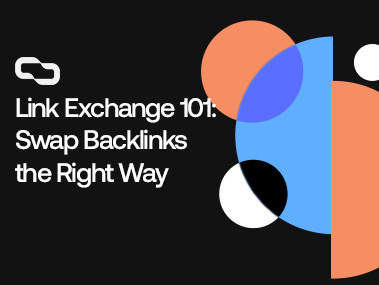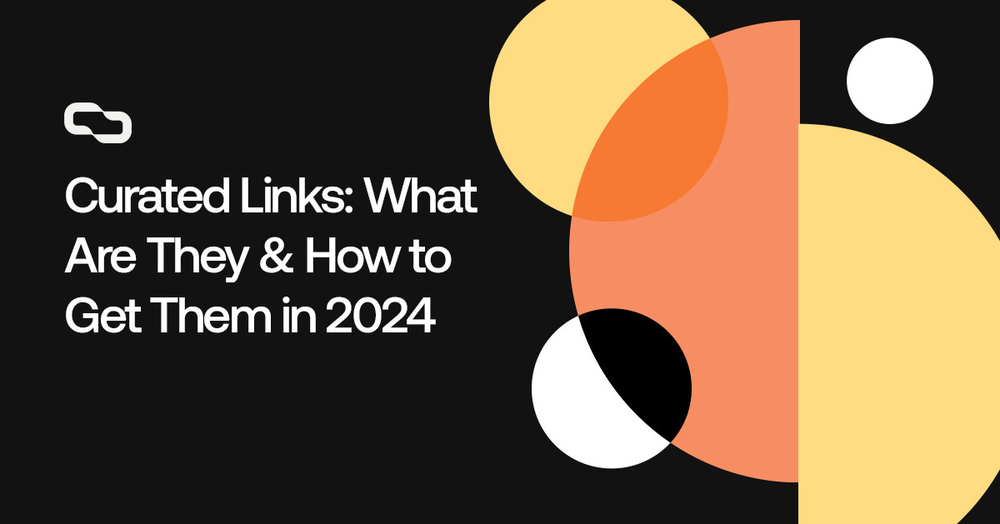Get links on brand new relevant articles for a boost of Authority and Relevance that’ll catapult your SEO. Our links include both DR and Traffic, so you don’t have to choose between one or the other.

Back in the early days of the internet, it was pretty easy to fool search engines with some quick tricks, like stuffing a bunch of keywords onto a page.
But times have changed a lot.
Nowadays, search engines, especially the big ones like Google, really focus on whether websites are getting their links honestly.
They’re all about natural links now.
So, in this guide, I’ll walk you through what natural links are, why they’re so important for your website, and how you can earn them to boost your SEO.
What Is a Natural Link?
A natural link is a backlink that pops up in the wild of the internet, totally on its own—no setup or payment involved by the site owner.
Think of it as the web’s way of giving a nod to content that stands out.
While you can nudge the process along by reaching out to top-notch sites, for a link to truly be natural, it’s got to contextually fit right in where it’s placed, offering real value to anyone who clicks on it.
The anchor text should also feel like a natural part of the conversation in the content.
Why Is Natural Link Building Important?
Natural link-building is important because it aligns with Google’s mission to provide the most relevant search results.
This tech giant values authenticity and rewards websites that earn their backlinks genuinely, as these are seen as votes of confidence in your content’s quality.
When you stack up natural links, you’re not just ticking a box; you’re boosting your website’s credibility and visibility in search engine results pages (SERPs).
On the flip side, trying to outsmart Google with shady link-building tactics can backfire, leading to penalties instead of perks.
Remember, Google’s algorithms are getting sharper by the day, and they’re designed to favor sites that play by the rules.
So, the golden rule?
Keep your link-building efforts genuine, because that’s what will help your site climb the SEO ladder and stay there.
What Are the Other Types of Links?
1. Unnatural Links
Unnatural links are the ones you pay for, setting them apart from their natural, organic relatives.
They’re under the watchful eyes of PR firms, and media buyers, or entangled in affiliate programs, CPC campaigns, influencer endorsements, or monetization scripts.
The telltale sign of an unnatural link?
It’s traceable—think UTM codes that spell out where the link is coming from and why it’s there.
These links often hide in sponsored content, not always clear to search engines unless they’re explicitly marked.
Here’s the kicker: If Google spots these links and sees they’re not marked with a “nofollow” attribute, it could spell trouble for your site.
You might face manual penalties or fall foul of algorithms like Penguin, which specifically target these manipulative link-building tactics.
Unnatural links might also arise from monetization scripts, linking out for cash rather than relevance or quality.
A deep dive into the site’s code or a close look at outbound redirects is necessary to uncover these links.
In short, if there’s a financial motive behind a link, it’s likely stepping into unnatural territory.
2. Semi-Natural Link
Sometimes, the line between natural and unnatural links gets a bit blurry, leading to what can be called “semi-natural” links.
Imagine a scenario where an influencer, who’s been paid, shares a link.
This link, while shared in a paid context, leads to a landing page with tracking parameters.
Here’s where it gets interesting: bloggers, aggregators, or other online entities might pick up this link and share it organically on their platforms.
Although the link originated from a paid share, it now circulates naturally across the web, carrying its tracking parameters along.
This blend creates a unique link pattern that’s part natural, part unnatural.
To navigate this gray area, you can implement a savvy technical solution.
When someone lands on your site via such a tracked link, set up a redirect that strips away the tracking parameters, leading them to the standard page URL.
This way, while you still track the initial interaction’s source, any subsequent shares of the link will appear wholly natural.
To gauge the broader impact of these semi-natural links, you can also analyze link acquisition reports and assess the engagement metrics—like likes, shares, and retweets—stemming from the initial paid share.
This approach helps you understand the extended reach and influence of these mixed-origin links.
What Makes a Good Link?
A good link is a secret ingredient that boosts your SEO with minimal risk.
But here’s the twist: the definition of a “good link” isn’t one-size-fits-all.
It changes based on whether you’re focusing on local, national, or international SEO.
It also depends on the search engine playground you’re in—be it Yandex in Russia or Google search in the UK.
Take Russia and Yandex as an example.
Over there, a good link plays by the rules, steering clear of banned content and aligning with government guidelines.
This idea of what’s good or not can vary dramatically from what might give your SEO a leg-up in other countries or on different search engines.
Zooming in on local SEO link-building, think of directories that are well-kept and selective as your allies.
They’re gold locally but might not shine as brightly on the national stage due to questions of relevance and quality.
Those directories that keep things tidy, clearing out the digital cobwebs of outdated links, are the ones that can bolster your SEO.
Now, link-building isn’t always straightforward.
Consider a niche blog brimming with great link-worthy content but lacking in age or authority.
It’s a “maybe” on the potential scale.
Then there’s that seasoned blog that hasn’t quite hit the jackpot on Google but is a trove of consistent, niche gems—that’s an “OK” in the link evaluation handbook.
Let’s not forget about the new kid on the blog block—an emerging site with a dedicated following and spot-on content but not much SEO clout yet.
That’s the kind of link that holds promise, especially if it’s on a path to gaining authority and influence.
So, when it comes to guest post links, it’s all about context and potential.
A good link today might be a great one tomorrow, depending on how it fits with your SEO strategy and evolves.
What Are Quality Links?
Quality links are the elite players in the link-building game, sourced from websites renowned for their exceptional standards and relevance.
They stand out from the average “good” link, offering clear benefits rooted in the credibility of their source.
So, how do you identify these top-tier editorial links?
Let’s walk through a practical checklist:
- Niche Relevance: Seek out links from sites that are authorities in your niche or have dedicated sections regularly updated with relevant content.
- Clean Linking Profile: Opt for sites that avoid questionable associations, steering clear of links to adult content, illegal activities, or scams.
- Transparency: Trustworthy sites are open about their content practices. They might host sponsored content, but it’s always clearly labeled, maintaining transparency.
- No Paid Link Offers: Beware of sites that publicly price backlink insertions in their media kits or advertising sections. Genuine quality sites do not commodify their links.
- Google News Recognition: A presence in the Google news feed often signals that a site is viewed as authoritative and credible in the eyes of Google.
- Content Origin: Value links from staff writers more than those from contributors. Staff-produced content reflects the site’s standards and is less likely to be influenced by external incentives, as highlighted by the discussions around the Huffington Post’s policy change on contributor links.
- Placement in Body Copy: The best links are those organically woven into the main text of an article, contributing real value, unlike those in blog comments or forums, which can be less discerningly placed.
How Can You Build Quality Natural Links?
1. Prioritize Value Creation Over Link Requests
When it comes to creating inbound links, your best bet isn’t solely about hunting for natural backlinks; it’s about creating exceptional content.
Such content naturally magnetizes organic shares and backlinks, boosting your success rate for any link requests you might make.
In the ever-watchful eyes of Google, paid links are a hot-button topic, with algorithms continuously scanning for them.
Therefore, it’s prudent to avoid buying links.
Yet, when you suggest or request links that offer good value and are contextually appropriate, these can align with natural link-building practices, keeping you on the right side of the ethical SEO world.
2. Elevate Existing Popular Content
Keeping abreast of the latest trends is a smart move in content strategy, but why not take it a step further?
Identify content within your niche that’s already performing well and then craft something even more compelling that builds upon these foundations.
This approach, known as the Skyscraper Technique, is particularly potent for tackling controversial topics or filling gaps in existing discussions.
After crafting your content masterpiece, don’t just sit back—actively promote it.
Share it on your social media platforms and engage with your target audience.
But don’t stop there: reach out to influencers and others in your field who can amplify your content’s reach.
This will garner attention and natural backlinks rather than simply waiting for your content to be discovered organically.
3. Diversify Your Content Portfolio
It’s smart to mix up the kind of content you create.
Don’t just stick to one topic or one way of presenting your ideas.
When you offer a variety of content, more people find something they like and might link back to it.
Think about who’s going to read or watch your content.
Different people like different things, so what works on one social media platform might not work on another.
Keep an eye on what’s popular where you post content.
Want your content to get a lot of attention?
Planning is better than just hoping it’ll happen.
By having a wide range of content with a natural page structure, you’ll attract more people and increase your chances of getting those valuable links.
4. Encourage Sharing Proactively
Don’t just post your content and cross your fingers, hoping people will share it.
Be clear about what you want your audience to do by using a call to action.
Whether it’s a retweet, a share, or any other form of engagement, sometimes all you need to do is ask.
If you have someone in mind whose share would make an impact, don’t hesitate to reach out to them personally.
Choose people who will likely be interested in your content and happy to share it with their followers.
By directly engaging with potential sharers, you’re not just waiting for shares to happen—you’re making them happen.
5. Leverage Ego Bait for Influencer Engagement
Securing a share from a leading influencer can be a game-changer, but why not make the proposition even more enticing with a bit of ego boost?
Instead of just asking for a share, why not propose an interview?
This approach isn’t just flattering; it offers mutual benefits.
By interviewing them, the influencer gets a platform to enhance their visibility and share their insights, which can be a big win for their brand.
On your end, you receive engaging content that your audience is likely to enjoy and value.
The best part?
Once published, the interview could gain traction thanks to the influencer’s involvement, making it more shareable.
This increase in popularity could result in natural backlinks and extend your reach to a broader audience.
FAQs
What Is a Natural Link?
A natural link is a backlink that’s created organically without the website owner’s direct involvement or any form of payment.
What Is an Example of an Organic Link?
An example of an organic link is when a blogger links to your website because they genuinely value your content and believe it benefits their readers.
What Are the Advantages of Natural Links?
The advantages of natural links are significant improvements in Search Engine Optimization (SEO), increased website credibility, and enhanced authority, as these links are seen by search engines as marks of content quality and relevance.
What Are Natural Editorial Links?
Natural editorial links are backlinks included within an editor’s content without compensation, signifying trust and value in the linked content.
Conclusion
To master the art of building natural backlinks, cultivate a link profile that appears natural and diverse.
This involves incorporating a variety of high-quality backlinks, from guest posts and niche edits to web 2.0 links, images, and PR backlinks.
But if building links feels daunting, don’t hesitate to seek expert guidance.
Our team of link-building professionals is ready to analyze your backlink profile, identify areas for improvement, and craft a tailored link-building strategy that targets your greatest growth opportunities.
So, let us help you chart the path to the top of Google with a plan that’s as unique as your online presence.
Find out your exact cost of ranking for your dream keyword
Find out nowLet’s get you ranking now
If you want the team at Get Me Links to help you get more traffic
Book a call NOW Back to Blog
Back to Blog 11 Minutes Read
11 Minutes Read


